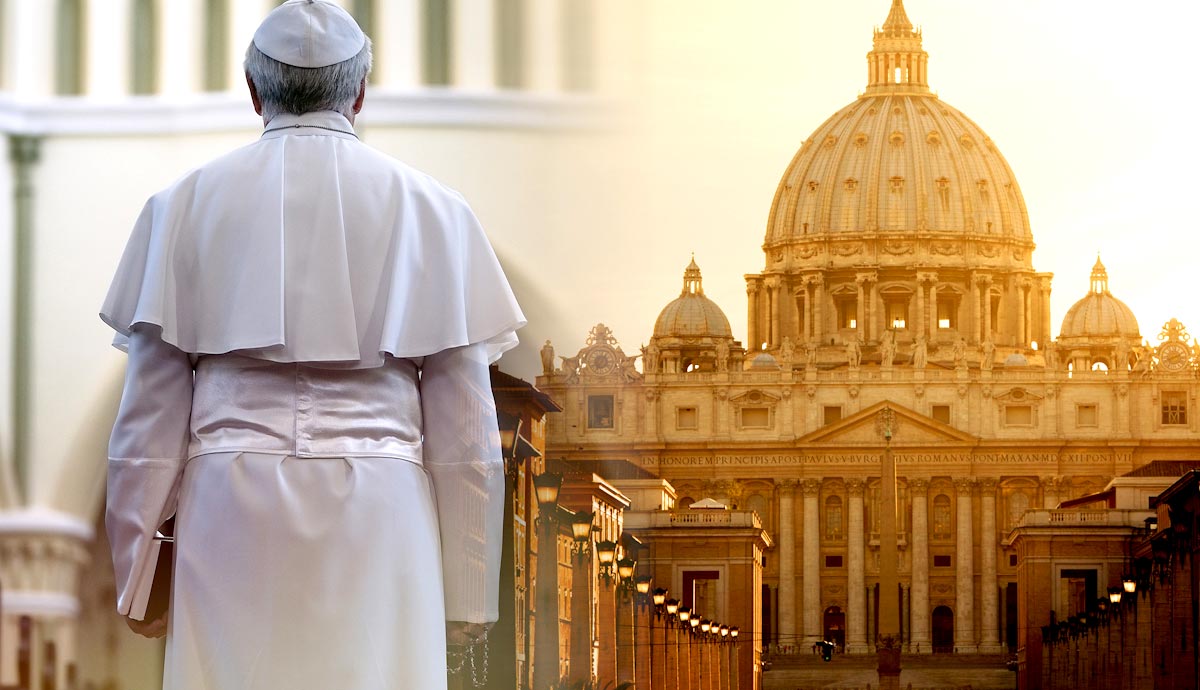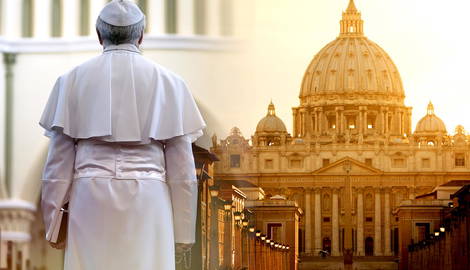
The name of Vatican City comes from its location in a formerly marshy area on the west bank of the Tiber River. It has become a symbol of Catholicism, as the head of state also serves as the head of the Church. Vatican City is one of the world’s smallest countries, nestled within the city of Rome, and is also one of the last remaining true theocratic monarchies. How does this political structure work? This article will chronicle the ins and outs of the governance of the Holy See.
Ager Vaticanus & the History of the Papal State

The dominion of the pope has existed for over one thousand years, though Vatican City was not always the stage from where the pope ruled. Originally, the area where the Vatican now sits, called the Ager Vaticanus, was the site of Roman attractions such as the Circus of Nero, marked by the Vatican Obelisk, its only remnant in the modern city-state.
The area that is now St. Peter’s Square is thought to have been the site where the apostle Peter was crucified upside down in the circus. Upon the conversion of Rome to Christianity under Constantine, construction began on the Basilica of St. Peter, built in 326 CE over the site where St. Peter was reportedly entombed. The basilica served as a basis upon which the papacy built its state, as the pope began to be regarded as both a secular and religious governor of the area.

The pope became head of the Papal States, which encompassed a wide swath of the Italian Peninsula from 756 to 1870. The pope lived and governed from a palace on the opposite side of Rome for approximately 1,000 years. During the 14th century, rule was briefly transferred to Avignon, France.
The Papal States were seized in 1870 by the newly formed Italian Kingdom, and the new king of Italy undermined the rule of the pope. It wasn’t until 1929, when the papacy had been entrapped within the walls of the Vatican for almost 60 years, that Vatican City was declared an independent state by way of the Lateran Treaty, signed by Benito Mussolini, who was then the Prime Minister of Italy.
The papacy has evolved over its statehood, but the Holy See remains firm in its governance of the city-state. The Vatican began as an absolute monarchy and has continued as such up to this day.
Administration of Vatican City

The executive, legislative, and judicial bodies of the Vatican are under the dominion of the Bishop of Rome, otherwise known as the pope. Though this city-state is the current iteration of the rule, Vatican City is not essentially equated with the Holy See. The Holy See is the title of the body of the government, the cardinals, bishops, and the pope. However, the Holy See can exist without a state as well and is seen as the only entity that has endured throughout the 1,000+ years of the Catholic Church’s rule.
The land of the Vatican City-State is simply an area from which the Holy See can rule its subjects, which technically includes all Catholics. The power of the pope is absolute in both the Holy See and the administration of the Vatican. However, as with all monarchies, the pope does not oversee every detail of administration and delegates power to several other members of the government to exercise power on his behalf.
Legislative, executive, and judicial power are handled by several bodies within the government of the Vatican, which all, in theory, answer to the Supreme Pontiff, the pope. However, several members operate in a semi-independent manner, with people at the head of each branch that has been delegated power by the pope.
The Pope & the Executive Branch of the Vatican

The pope is the absolute monarch of the Vatican and serves as its religious leader as well. However, several executive powers are delegated as well to the President of the Governorate, who is the head of government of the Vatican. The pope, while sovereign in the Vatican, exercises his power mostly through the Roman Curia, that is, the governing bodies of the Catholic Church or the Holy See.
The President of the Governorate is an office created in 1952 to replace the Governor of Vatican City. This executive leader is solely responsible for the governing affairs of the Vatican City-State itself on behalf of the pope. He sits at the head of the Pontifical Commission, which is the main legislative body of the Vatican. The pope selects the president for a five-year term, and since October 2021, the post has been held by Spanish Archbishop Fernando Vérgez Alzaga.

While both the pope and the president have governing power, all decisions and matters of state, whether that be directly related to the Vatican or the Holy See, are consulted upon by both executives.
The pope, on the other hand, is the ex officio head of the Vatican City State, but is an elected monarch rather than a hereditary one. The office of the pope is held for life or until retirement, and when a new pope is elected, the electoral body that does so is the College of Cardinals, or the Papal Conclave. As of 2023, the current pope is Pope Francis, who was the Archbishop of Buenos Aires in his home country of Argentina until he was elected pope in 2013.
The College of Cardinals meets in the Sistine Chapel to elect the pope, and the electors are locked in until a two-thirds majority is reached. Those on the outside can witness the results of the polls through a chimney top, visible from St. Peter’s Square, where the voting papers are burned, usually on a schedule of two in the morning and two at night until the election is decided. Until the decision has been reached, the smoke from the oven burns black through the chimney, but when a new pope has been elected, the smoke burns white.
The Legislative System of the Vatican

Legislation in the Vatican is carried out by the unicameral Pontifical Commission for Vatican City State. This commission, comprised of seven cardinals, proposes new acts and policies to benefit Vatican City, as well as the Holy See. The commission is appointed solely by the pope, each position holding a term of five years. The head of the commission, the President of the Pontifical Commission, serves not only as an executive head of state but also as head of the legislature.
When passing a new act, the Pontifical Commission must be approved through the Secretariat of State. The Secretariat of State is the main faction of the Roman Curia that serves all political and diplomatic functions for the Holy See.
The head of the Secretariat, a cardinal, is deemed the Secretary of State and handles the three branches of the dicastery, which include the Section for General Affairs, the Section for Relations with States, and the Section for Diplomatic Staff, established by Pope Francis in 2017. The incumbent Secretary of State is Cardinal Pietro Parolin, who has served in the role since 2013.

The Secretariat of State must approve legislation that applies to the Vatican City State because the law of the land is the Canon Law of the Catholic Church. Thus, the Vatican is one of the last remaining true theocracies, as its law directly corresponds to the law of the Church.
There is also Fundamental Law, which corresponds to the civil governance of Vatican City. Civil law was promulgated by Pope John Paul II in 2000 and nullified any law of the Vatican that did not align with the new Fundamental Law. The Vatican is also governed by penal and positive civil law, which, until 2013, was based on the Italian Code of 1889. The law was updated the same year that Pope Francis was elected to reflect several United Nations Conventions, as well as to include modern penalties for crimes like money laundering and sexual abuse.
The apostolic constitution, called the Pastor Bonus, governs the Roman Curia and thus the Catholic Church. It established codes and laws to help the pope govern the global Church but was left behind in favor of the Praedicate Evangelium (Preach the Gospel), which has served as the Church’s apostolic constitution since 2019.
Also, since 2008, the Vatican has not automatically adopted the laws of the Italian government. Rather, every time a new law is introduced in Italy, the Vatican has the right to review it and decide whether it aligns with the values of the Church. If it does not, the Vatican has the right to deny implementation of said law.
The Judicial System of the Vatican

The law of the Vatican is enforced by a judiciary, which was updated by Pope Francis in 2020. The Vatican tribunal comprises a president and four judges, which the Pope increased by one judge. The tribunal is made up of jurists who work independently, chosen and appointed by the Pope, who come from a pool of university professors and proven magistrates of the law.
The 2020 law also provides a leader for the Office of the Promoter of Justice, the state prosecutor. The new system, including the tribunal and the Office of the Promoter of Justice, only answers to the Pope himself, ensuring their independence from other offices within the Vatican.

The law simplified and bolstered the judicial system of the Vatican to deal with more financial and criminal matters. The conduct and procedures regarding the prosecution of such matters were codified by the law and allow for standard disciplinary action.
The laws of the Vatican are also enforced by the Gendarmerie, the police force of the city-state. They are a civilian force but are subject to age and height requirements and must be practicing Catholics. The small force, which is comprised of under 200 officials, operates as a normal police force does in any other country while also handling border control.
Although the Vatican has a relatively low crime rate, the number of prison cells in Vatican City alone is small. Thus, criminals are held in Italian prisons by the terms of the Lateran Treaty.
The Vatican Political Structure in Summary

Vatican City is one of the last remaining true theocratic states in the world. While technically the pope is the reigning elected monarch of the small state, several other facets within its government exist to make it functional. Namely, the separation between Vatican City (the state) and the Holy See (the Church).
While the Vatican operates as the government of the global Catholic Church, it is also a state that must have functioning systems in place. These include public services, judicial arenas, and foreign relations.
The Vatican is, ultimately, an interesting case study in how a religious microstate runs, and provides a unique, almost otherworldly glimpse into the past and future of religious governance mixed with the secular state.











